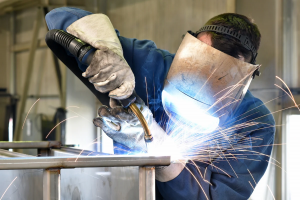Exploring the Different Welding Technologies in Stainless Steel
Stainless steel is a highly versatile material renowned for its corrosion resistance, strength, and aesthetic appeal. Welding is a critical process in fabricating stainless steel components and structures, requiring specific techniques to ensure the integrity and performance of the material.
1. Tungsten Inert Gas (TIG) Welding
Overview
Tungsten Inert Gas (TIG) welding, also referred to as Gas Tungsten Arc Welding (GTAW), is a widely used technique for welding stainless steel.
This method employs a non-consumable tungsten electrode to create the weld, while an inert gas, typically argon, shields the weld area from contamination.
Advantages
High Quality and Precision: TIG welding produces high-quality, precise welds with excellent control over the welding arc and heat input, making it ideal for thin sections of stainless steel.
Clean Welds: The process minimizes contamination and oxidation, resulting in clean, aesthetically pleasing welds.
Versatility: Suitable for various stainless steel grades and applications, including intricate and complex geometries.
2. Metal Inert Gas (MIG) Welding
Overview
Metal Inert Gas (MIG) welding, or Gas Metal Arc Welding (GMAW), uses a consumable wire electrode fed through a welding gun and an inert or semi-inert gas mixture to protect the weld pool.
Advantages
Speed and Efficiency: MIG welding is faster than TIG welding, making it ideal for larger projects and production environments.
Ease of Use: It is relatively easy to learn and use, which can reduce training time for operators.
Flexibility: Suitable for thin and thick sections of stainless steel, and can be used in various positions (flat, vertical, overhead).
3. Shielded Metal Arc Welding (SMAW)
Overview
Shielded Metal Arc Welding (SMAW), or stick welding, uses a consumable electrode coated in flux to lay the weld. The flux coating disintegrates during welding, providing shielding gas and a slag layer to protect the weld.
Advantages
Versatility: SMAW is highly versatile and can be used in a variety of environments, including outdoors and in adverse conditions.
Cost-Effective: Requires less expensive equipment and consumables compared to other welding methods.
Suitable for Thick Sections: Effective for welding thicker sections of stainless steel and for repairs and maintenance tasks.
4. Plasma Arc Welding (PAW)
Overview
Plasma Arc Welding (PAW) is similar to TIG welding but uses a constricted arc to generate a high-temperature plasma jet. This jet provides the heat necessary to melt the metal and create the weld.
Advantages
Precision: Offers high precision and control, suitable for welding thin and delicate stainless steel components.
High Welding Speed: Capable of higher welding speeds compared to TIG welding, improving productivity.
Deep Penetration: Provides deep penetration welds, making it suitable for thicker sections of stainless steel.
5. Laser Beam Welding (LBW)
Overview
Laser Beam Welding (LBW) utilizes a focused laser beam to melt and fuse materials. This non-contact process generates a high-energy density, resulting in precise and deep welds.
Advantages
Precision and Quality: Produces high-quality, precise welds with minimal distortion and heat-affected zones.
Speed: High welding speeds, making it ideal for high-volume production and automation.
Minimal Post-Weld Treatment: Typically requires less post-weld finishing due to the minimal spatter and clean welds.
6. Electron Beam Welding (EBW)
Overview
Electron Beam Welding (EBW) uses a focused beam of high-velocity electrons to melt and join materials. It is conducted in a vacuum environment to prevent contamination.
Advantages
Deep Penetration: Capable of producing deep, narrow welds, making it suitable for thick sections of stainless steel.
Precision: Offers precise control over the weld, resulting in high-quality joints with minimal distortion.
Clean Process: Conducted in a vacuum, reducing the risk of contamination and oxidation.
Whether you need high precision, speed, versatility, or deep penetration, there is a welding method that meets your needs. Understanding the characteristics and benefits of each welding technique allows manufacturers and fabricators to choose the most appropriate method for their specific project, ensuring the integrity, performance, and aesthetics of stainless steel structures and components.

 +86 159 6420 9667
+86 159 6420 9667  sales@haxrailing.com
sales@haxrailing.com 




